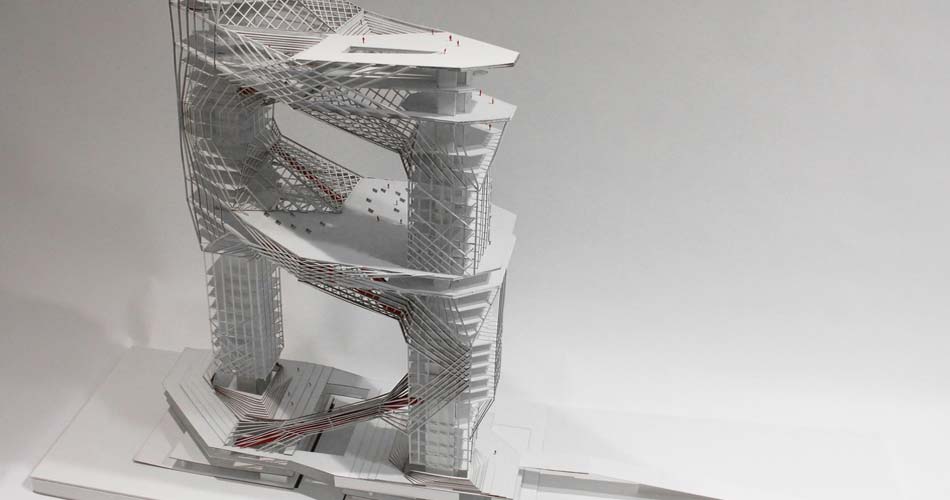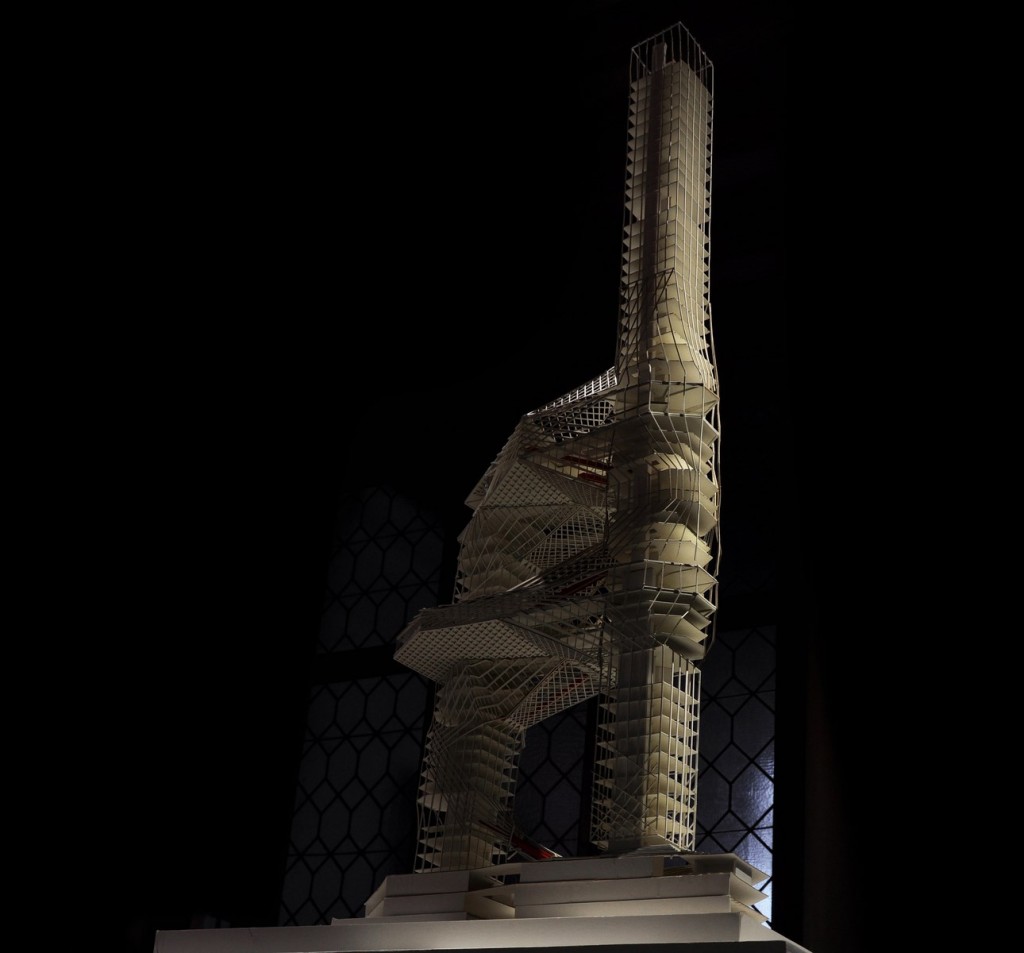Designed by Jae K. Kim of Co-De:CounterDesign, the Form of Public Control project is aimed at being the 20th century’s notion of a skyscraper in Manhattan. As a symbolic individual in the city, it should be redefined due to the reinterpretation of the grid to accommodate more public amenities and facilitate the cultural contexts of Manhattan. Currently, the project is exhibited for the collateral event of the Venice Architecture Biennale, at Palazzo Bembo, which was invited from the Global Art Affairs Foundation.
Architect:Jae K. Kim / Co-De:CounterDesign
Location:Manhattan,New York, United States
Drawings: Jae K. Kim
Client: Global Art Affairs Foundation
Program: Cultural complex (theater and gallery) + Residential units
Project period: 8/2011-12/2011

These Days, pedestrian plazas, transportation infrastructure, and zoning resolution have given individuality to each part of the grid which used to be seemingly identical with little public provision. Especially, Mid-Manhattan shows this tendency clearly. Pedestrian activity and cultural programs of Theater District and Times Square has infiltrated into the strict grid and created Mid-Manhattan’s own public realm. In this regard, given the grid’s capacity for reinvention, how might architecture continue to adapt and response to today’s new change? Defying the conventional typology of a skyscraper, a stack of individual programs, the project is aiming to reimagine the typology of a skyscraper to address the building’s relationship with the urban fabric and respond to the existing street life and culture.

In opposition to architects’ and architectural critics’ definitions of the skyscraper in the 20th Century as having a “hostile relationship with outside” and being “an anarchic individual aloof from the city”, a skyscraper in Manhattan has evolved to accommodate more public programs for better urban environment as well as commercial reasons. In this context, the project proposes a skyscraper as an urban connector, by rethinking circulation and structure.

This new type of a skyscraper supports the multiple strata of public space and cultural programs, such as a theater and a museum, to extend existing urban contexts, art and performance, of Mid-Manhattan, not only at street level but into the sky above. Also, as an urban-scale strategy, the project also seeks to interconnect the dense grid with vertical structures with the most dominant public realm in Manhattan, Central Park, through a 3 dimensionally manipulated building form.





